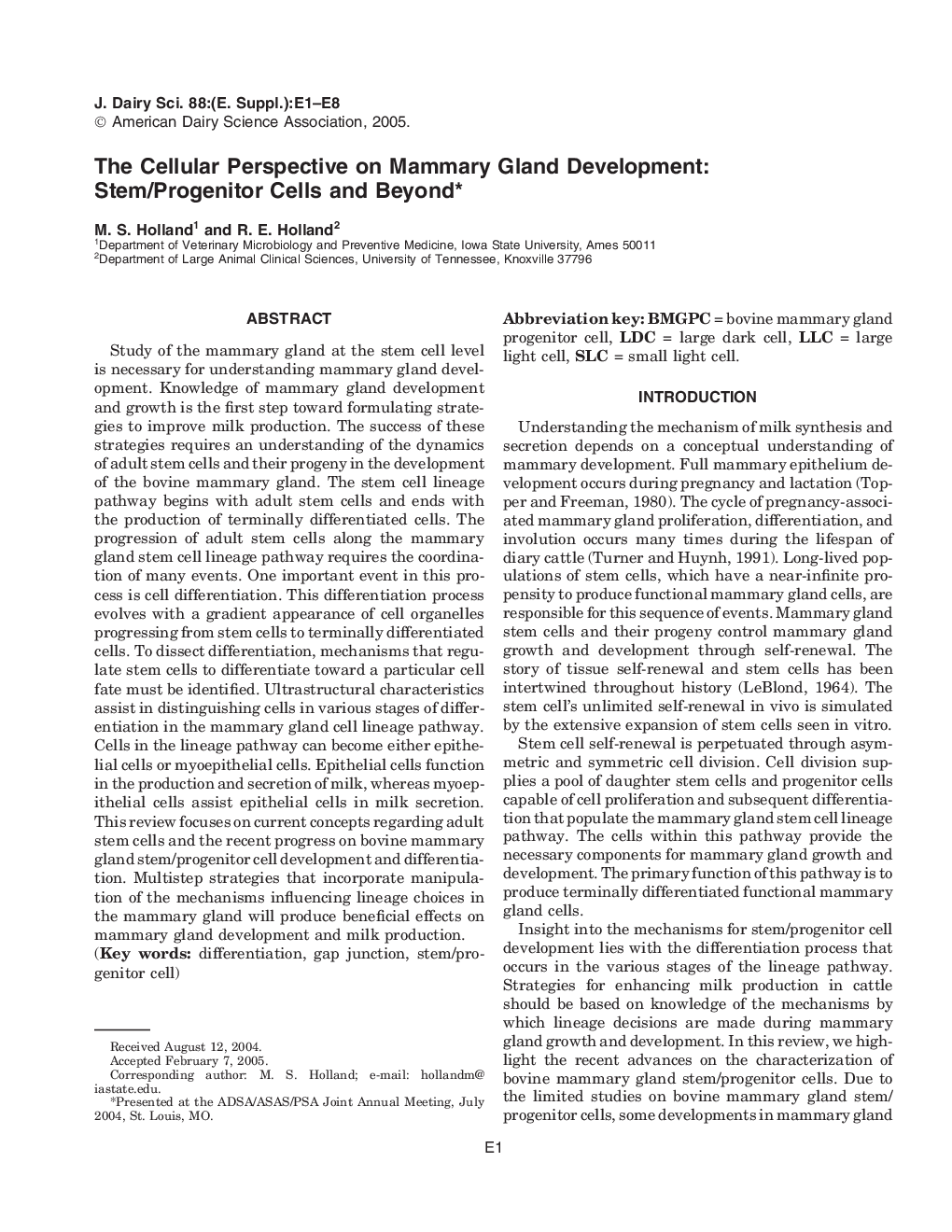| Article ID | Journal | Published Year | Pages | File Type |
|---|---|---|---|---|
| 8981245 | Journal of Dairy Science | 2005 | 8 Pages |
Abstract
Study of the mammary gland at the stem cell level is necessary for understanding mammary gland development. Knowledge of mammary gland development and growth is the first step toward formulating strategies to improve milk production. The success of these strategies requires an understanding of the dynamics of adult stem cells and their progeny in the development of the bovine mammary gland. The stem cell lineage pathway begins with adult stem cells and ends with the production of terminally differentiated cells. The progression of adult stem cells along the mammary gland stem cell lineage pathway requires the coordination of many events. One important event in this process is cell differentiation. This differentiation process evolves with a gradient appearance of cell organelles progressing from stem cells to terminally differentiated cells. To dissect differentiation, mechanisms that regulate stem cells to differentiate toward a particular cell fate must be identified. Ultrastructural characteristics assist in distinguishing cells in various stages of differentiation in the mammary gland cell lineage pathway. Cells in the lineage pathway can become either epithelial cells or myoepithelial cells. Epithelial cells function in the production and secretion of milk, whereas myoepithelial cells assist epithelial cells in milk secretion. This review focuses on current concepts regarding adult stem cells and the recent progress on bovine mammary gland stem/progenitor cell development and differentiation. Multistep strategies that incorporate manipulation of the mechanisms influencing lineage choices in the mammary gland will produce beneficial effects on mammary gland development and milk production.
Related Topics
Life Sciences
Agricultural and Biological Sciences
Animal Science and Zoology
Authors
M.S. Holland, R.E. Holland,
